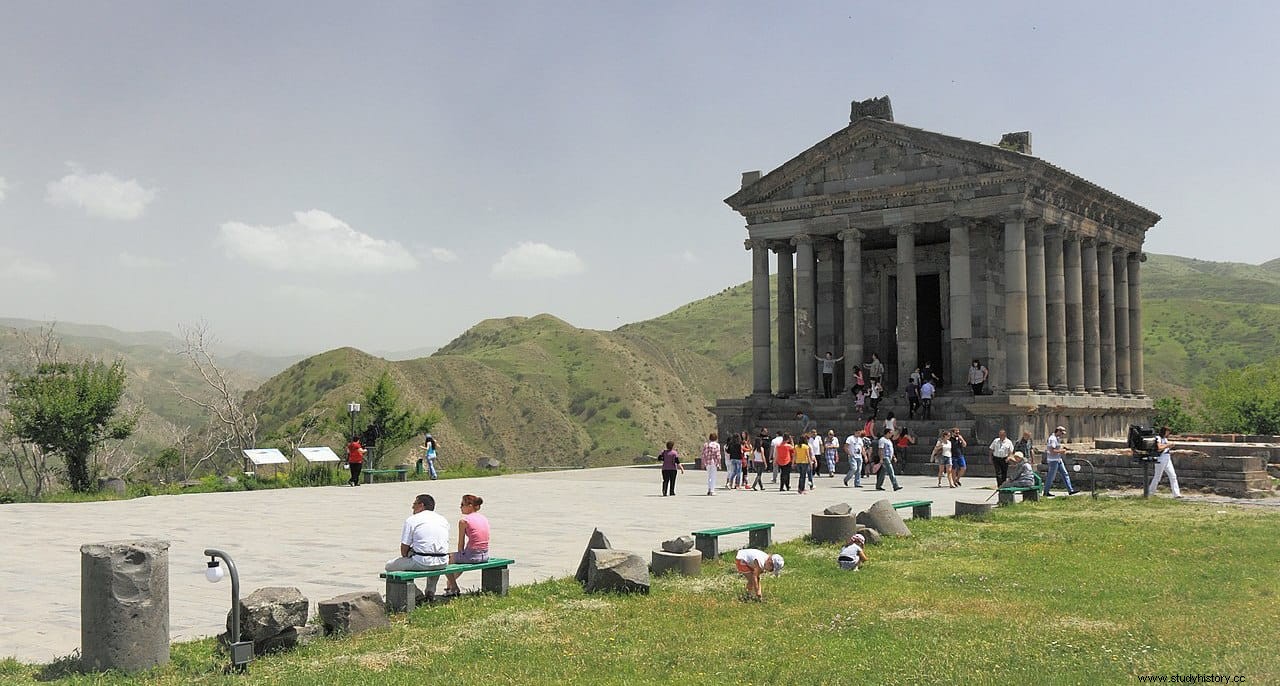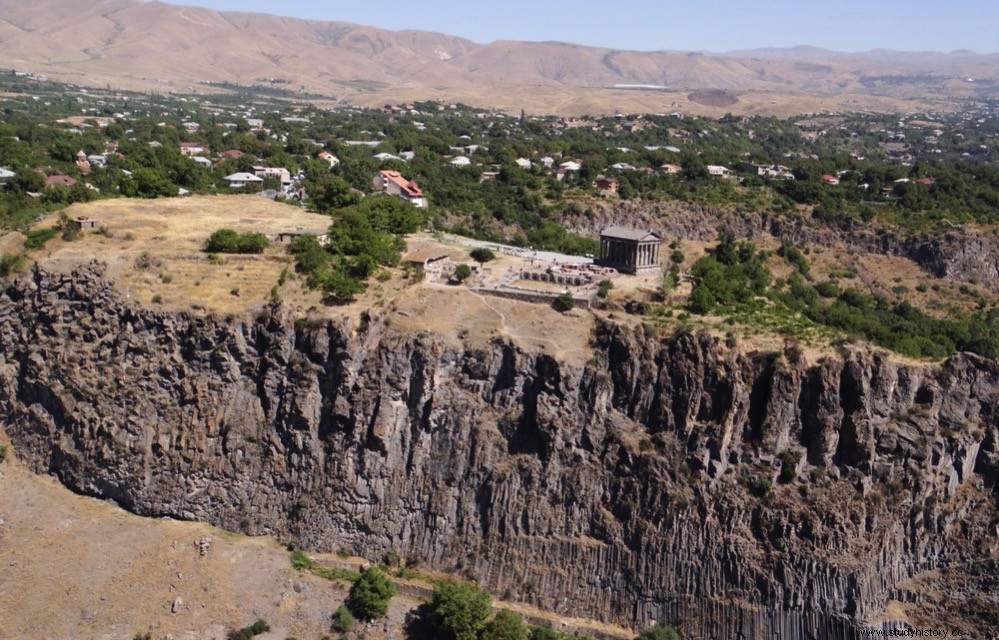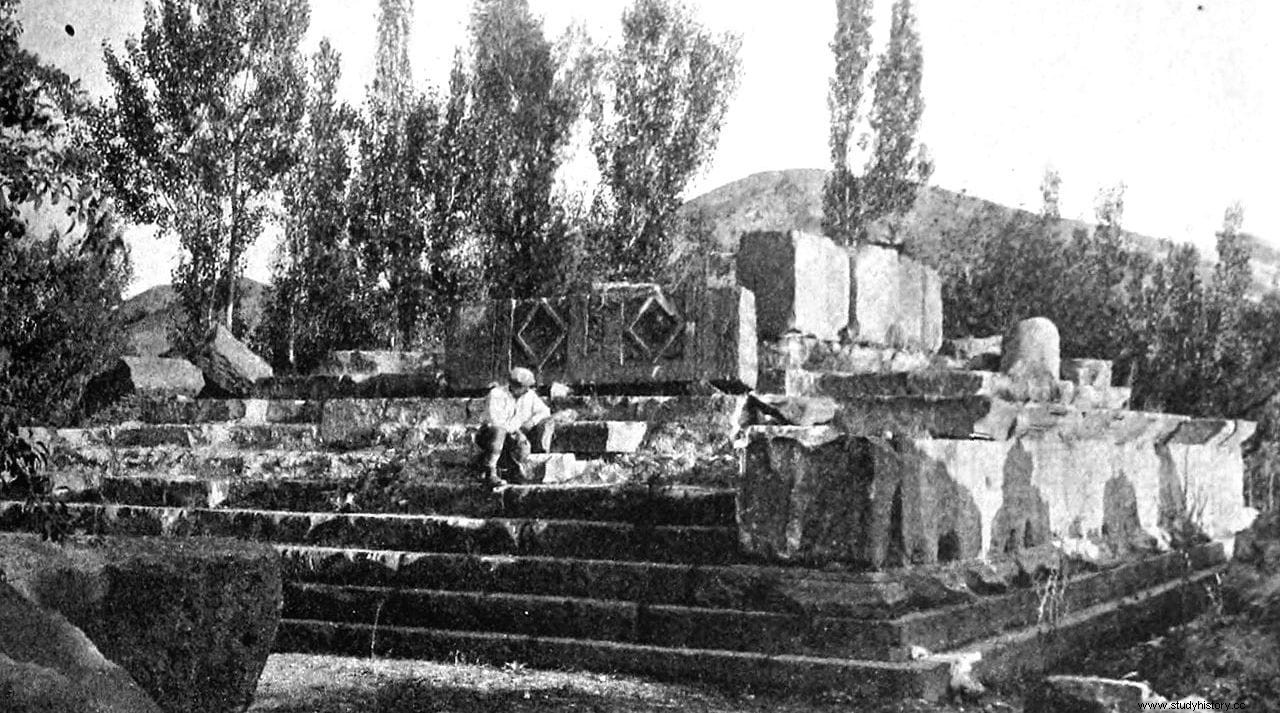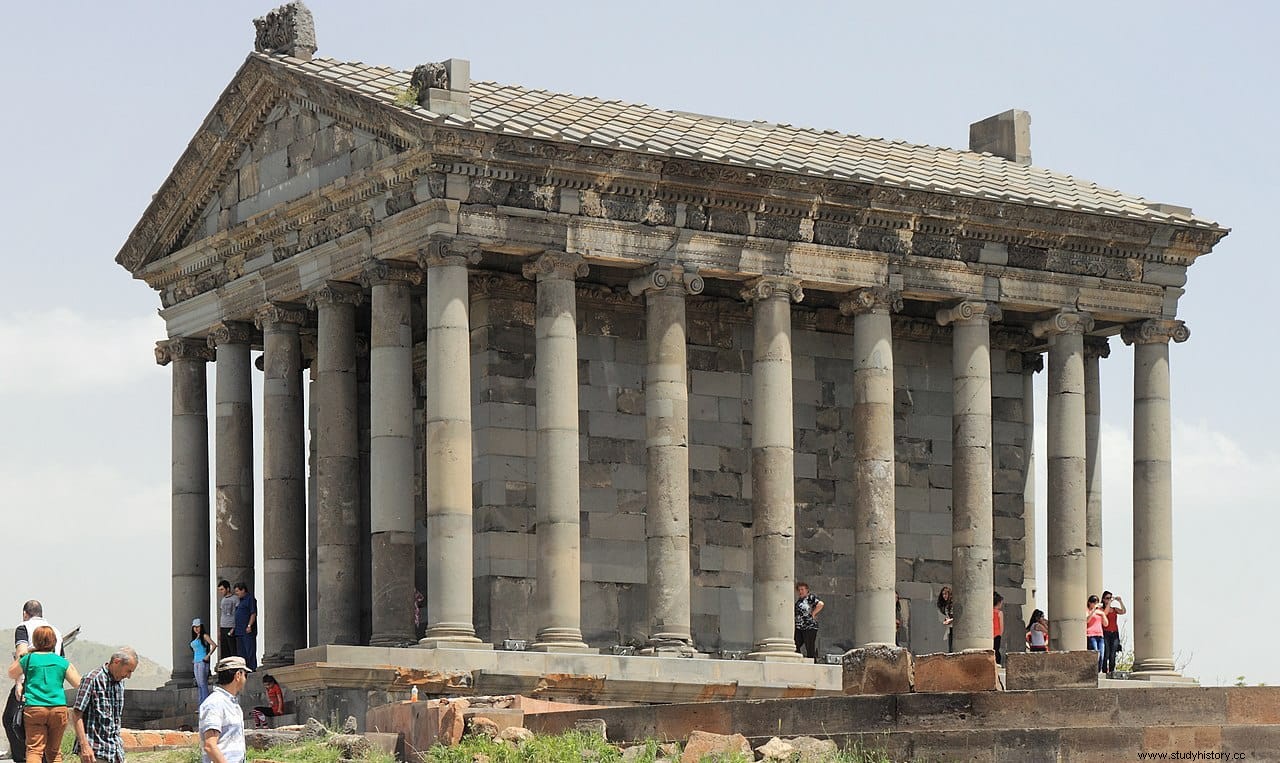While it existed, the Soviet Union encompassed a vast expanse of territory, including the Ukrainian, Georgian, and Russian Black Sea coasts. Along these lines, numerous Greek colonies were founded in ancient times, such as Chersonesus, Theodosia, Phanagoria, Pitio or Dioscuríade, among others, later subdued by Rome and which became Byzantine possessions during the Middle Ages.
Archaeologists have unearthed many of these cities, some with material finds of great importance. Interestingly, however, in the entire territory of the former Soviet Union, not more than a single Greco-Roman temple remains standing.
It is the Temple of Garni, located in the town of the same name in Armenia. It is a building from the Hellenistic period and Ionian style, built during the 1st century AD. at the time of King Tiridates I, and probably dedicated to the god Mihr, a deity associated with light and truth in pre-Christian Armenian mythology, equivalent to Mithras.

It is part of one of the oldest fortresses in Armenia, mentioned by Tacitus in the Annals of him as Gorneas :

It also preserves some Roman baths and a palace, as well as other structures from the Christian era.
The date of construction of the temple is deduced from a Greek inscription found on the walls of the fortress in 1945. It is said that it was built in the eleventh year of the reign of Tiridates I, which gives the date of the temple as 77 AD.
Most likely Tiridates used to raise it part of the 50 million sesterces that Nero gave him during his visit to Rome in 66 AD. and that they were intended for the reconstruction of the city of Artaxata, destroyed by the Roman general Gnaeus Domitius Corbulon in 59 AD. during the conquest of the region.

However, some researchers delay the date of construction until 115 AD. and others even as late as 175 AD. They are based on the stylistic comparison of the building with other Greco-Romans in Asia Minor, pointing out that the aforementioned inscription should refer to another construction (the truth is that the inscription is so damaged that multiple interpretations are possible). Furthermore, it would have been dedicated to Trajan and not to the god Mihr.
According to Richard Denys Wilkinson it would not be a temple but a tomb (of one of the Romanized Armenian kings of the 2nd century AD) and for this reason it was respected during the Middle Ages, which is why it would have been preserved intact when it became widespread at the beginning of the 4th century. the destruction of pagan buildings. Let us remember that the Armenian kingdom was the first state to adopt Christianity, and in fact the oldest Christian cathedral in the world is located there.

The current building is a reconstruction carried out between 1969 and 1975, since the temple was destroyed after an earthquake on June 4, 1679 and would not be rediscovered until 1909. More than 80 percent of the original masonry and friezes could be recovered and returned to put in place.
To replace the lost pieces, white stone blocks were used, so that they can be easily distinguished from the old ones.
The structure of the building is typical of ancient Greek architecture:peripteral, surrounded by 24 Ionic columns 6.5 meters high (6 on the front and 8 on the sides), raised on a basalt podium, and with a portico ( pronaos ) and cela (naos ).

Today it is, in addition to one of the main tourist attractions in the country, the center of Armenian Neopaganism , a religious movement that since 1991 has tried to recover the ancient pre-Christian cults.
